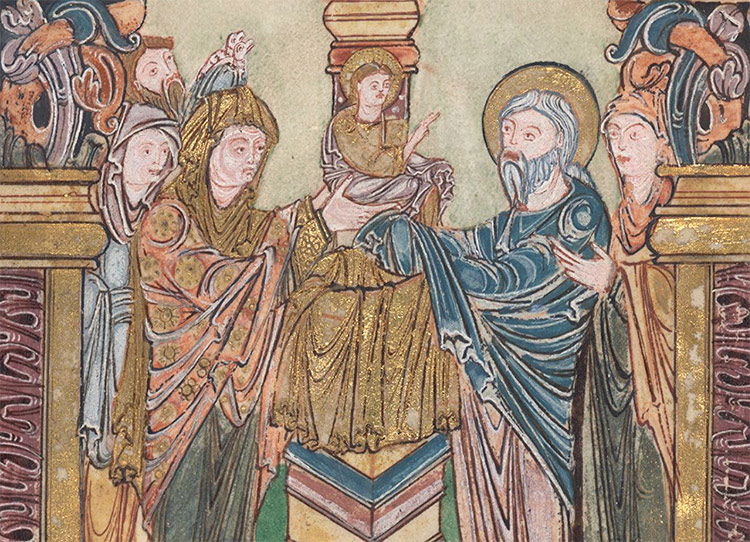A Clerk of Oxford
Eleanor Parker's blog takes in an astoundingly wide range of subjects relating to Anglo-Saxon and Scandinavian history and literature
 This year’s Longman-History Today award for Digital History went to Eleanor Parker for her blog, A Clerk of Oxford.
This year’s Longman-History Today award for Digital History went to Eleanor Parker for her blog, A Clerk of Oxford.
Parker writes regular blog posts on an astoundingly wide range of subjects relating to Anglo-Saxon and Scandinavian history and literature. Her academic work as a researcher at The University of Oxford focuses on the interaction between Anglo-Saxon and Viking culture in the eleventh and twelfth centuries following the Norse settlement in England.
The blog posts and her Twitter account, however, are much more wide-ranging. As History Today's editor, Paul Lay remarked in his speech at the award ceremony: not a morning goes by where she has not shared some fascinating and insightful new piece of medieval miscellany.
Her skill lies in making medieval topics – texts that are considered esoteric even by medieval specialists’ standards – engaging, accessible and fascinating to an audience of non-specialist readers. It is an added bonus that they have the same effect on specialist readers, too. Her inclusion of medieval texts in their original language as well as in translation means many of the misconceptions surrounding them are completely bypassed and her readers can engage directly with the material, guided by her expert commentary. The sources she draws on are wide-ranging, and always presented and discussed with humour, insight and passion.
This blog is a treasure trove of grounded in exemplary scholarship and is a much appreciated contribution to the field of history online.
Below are a few highlights.
On Old English Texts
'Ða easternan tungelwitegan gesawon niwne steorran beorhtne'
A discussion of the clever word-choices in Ælfric's sermon on the Epiphany.
A fascinating look through the clever and evocative word-choices of the homilist Ælfric, placing them within other surviving texts of the Old English corpus and demonstrating the ubiquitous Anglo-Saxon linguistic dexterity.
Nis se man for steorrum gesceapen, ac ða steorran sint mannum to nihtlicere lihtinge gesceapene,
'Man is not made for the stars, but the stars are made to be a light by night for men'.
'The words linger': Christ the Arkenstone and 'The Hobbit'
Connecting Advent, Old English and Old Norse poetry and The Hobbit.
Arkenstone, the name Tolkien gave to the great jewel of the dwarves, which he took from the Old English earcnanstan, 'precious stone'.
An analysis of Old English metaphorical word-use and gem-stone imagery in Biblical writing and Old Norse Eddas, as well as a foray into Tolkien’s philological choices. Amongst this, Parker delivers a beautiful description of the manipulation of narrative time in Christ III, a text about the second coming of Christ.
Revelations describes God as appearing like jasper and ruby, enthroned upon a rainbow like an emerald, and in Christ III the stars are called tungolgimmas 'starry gems', the eyes heafodgimmas 'the head's gems'.
'What an inestimable benefit have they conferred on posterity...'
Marking the anniversary of the death of Eadmer of Canterbury.
The life of the historian Eadmer, who lived on the break point between what we think of as Anglo-Saxon England and post-Conquest England; a knotty period often avoided by both Anglo-Saxonists and Middle English scholars. Eadmer and his writing are brought to life with boundless personality:
It's hard not to be fond of eager Eadmer, with his care for detail, his ear for conversation, his loyalty to his home, his tendency to hero-worship.
On Old Norse Texts
The Battle of Stamford Bridge told through the Old Norse text Hemings þáttr.
This post focuses on a Norwegian account of the Battle of Stamford Bridge, which was followed by a companion post looking at the storytelling surrounding Harold and the Battle of Hastings here.
‘Since he was not content with his own kingdom’, said the rider, ‘I'll give him six feet of English ground - a little more, perhaps, since he's a tall man. But nothing more than that, since I don't care about him.’
Middle English
Medieval Compliments, or, How to call someone 'beautiful' in Middle English
The common conception of vintage Hollywood movies that medieval people went around calling each other 'sweet lady' and 'sweet lord' is, basically, true. You should feel free to call your beloved 'sweet' on as many occasions as possible
Kate Wiles is Contributing Editor at History Today